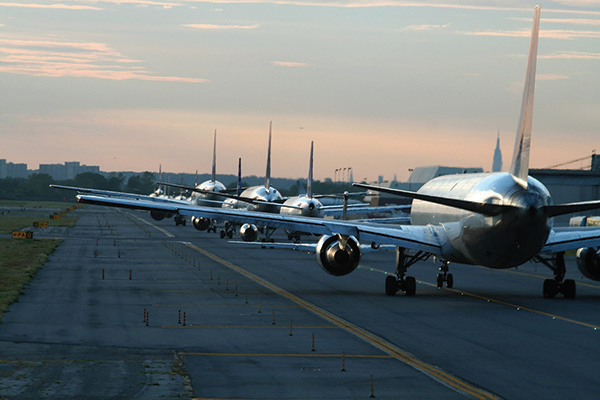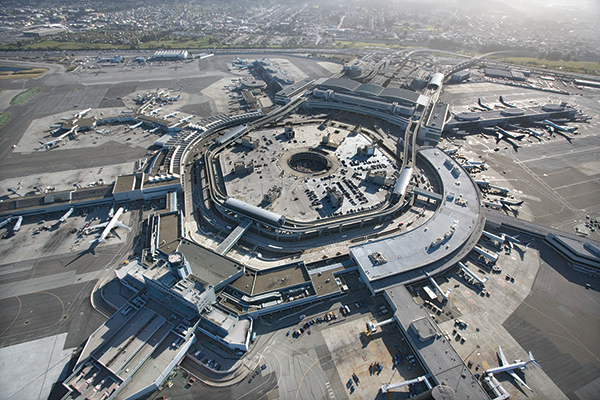IE releases new report to guide airports on local air quality health concerns from airport emissions
January 6, 2018
A new report published by the National Academies of Sciences, Engineering, and Medicine, provides guidance to airport operators on selecting an appropriate model for studying the potential health impacts of airport emissions. Scientists from the UNC Institute for the Environment led the study, which compared and contrasted four different dispersion models to make recommendations on how best to assess air quality impacts of airport emissions.
“Aircraft emissions contribute to local as well as regional air quality,” said Sarav Arunachalam, lead author and research professor at the Institute for the Environment. “When an airport is growing for example, it is going to have a lot more aircraft operations, which leads to potentially more air quality impacts in the airport’s vicinity. Airport operators must undertake dispersion modeling to understand what the impacts are, so this report gives them guidance on how to do that.”
Emissions from airports are unique compared to other sources of pollution, Arunachalam explained. Aircraft taxi from the gates, arrive at the runway and then take-off within a few minutes, sometimes seconds, creating a hot plume of exhaust in 4-dimensions. Given the unique characteristics of these rapidly moving sources, the researchers decided to examine the application of four different models to best capture and model the pollution dispersion.
The team selected the Los Angeles International Airport (LAX) in Southern California as the study site due to its size and scale as a top five commercial airport in the world, with nearly 700,000 landings and take-offs per year. This translates to nearly 80 aircraft that are taking off or landing every hour on an average. LAX also is situated close to a very large metropolitan area and in a complex terrain with mountains and the ocean on either side. The airport also had detailed data from an Air Quality Source Apportionment Study by Los Angeles World Airports (LAWA) conducted in 2011 – 2012, when detailed measurements of more than 400 chemical compounds were made for 17 locations in and around the airport. The team decided to leverage this powerful dataset in collaboration with LAWA, to study aircraft impacts in and around the four active runways at LAX.
The four models that the researchers compared were AERMOD, SCICHEM, CALPUFF and ADMS-Airport. AERMOD is the de facto model used for regulatory dispersion modeling in the United States. Each of the models were configured to predict seven pollutants—carbon monoxide (CO), oxides of nitrogen (NOx), sulfur dioxide (SO2), volatile organic compounds (VOCs), total organic gases (TOG), fine particulate matter (PM2.5) and coarse particulate matter (PM10)—on an hourly basis for two 6-week study periods during the summer and winter seasons.
“Airport operators don’t have much technical guidance on how to assess pollution due to airport-related sources, so it is a very practical report to help them understand the regulatory requirements, what inputs they need, what are the latest models available for them to use, how to apply them and understand their limitations. That is where this report took a big step forward—understanding where we have limitations in these models, and identify research needs on how to improve and enhance dispersion modeling of aircraft emissions in the future,” he said.
Read the full report: Dispersion Modeling Guidance for Airports Addressing Local Air Quality Health Concerns

